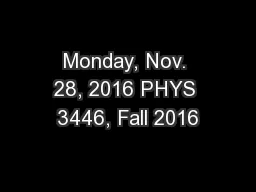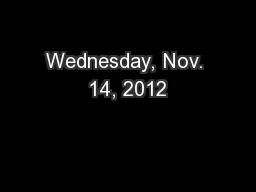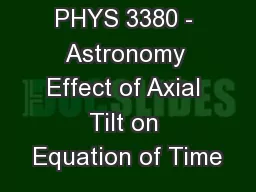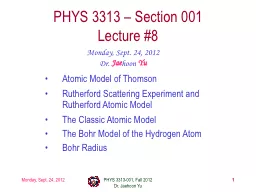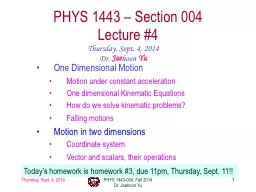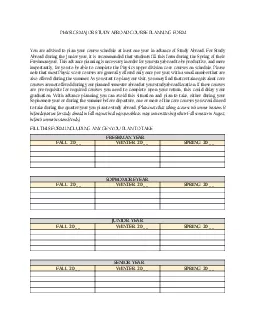PPT-Monday, Nov. 28, 2016 PHYS 3446, Fall 2016
Author : marina-yarberry | Published Date : 2018-03-16
1 PHYS 3446 Lecture 23 Monday Nov 28 2016 Dr Jaehoon Yu The Standard Model Quarks and Leptons Gauge Bosons Symmetry Breaking and the Higgs particle Issues
Presentation Embed Code
Download Presentation
Download Presentation The PPT/PDF document "Monday, Nov. 28, 2016 PHYS 3446, Fall 20..." is the property of its rightful owner. Permission is granted to download and print the materials on this website for personal, non-commercial use only, and to display it on your personal computer provided you do not modify the materials and that you retain all copyright notices contained in the materials. By downloading content from our website, you accept the terms of this agreement.
Monday, Nov. 28, 2016 PHYS 3446, Fall 2016: Transcript
Download Rules Of Document
"Monday, Nov. 28, 2016 PHYS 3446, Fall 2016"The content belongs to its owner. You may download and print it for personal use, without modification, and keep all copyright notices. By downloading, you agree to these terms.
Related Documents

